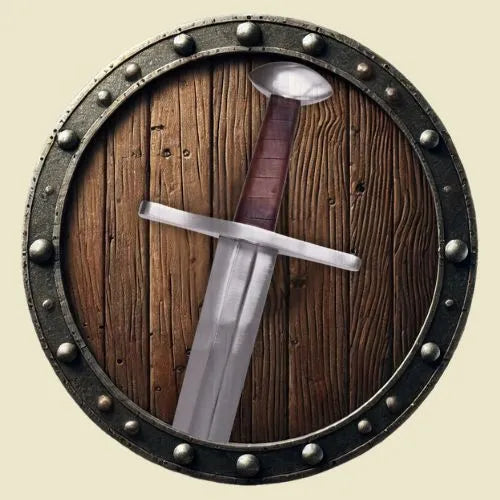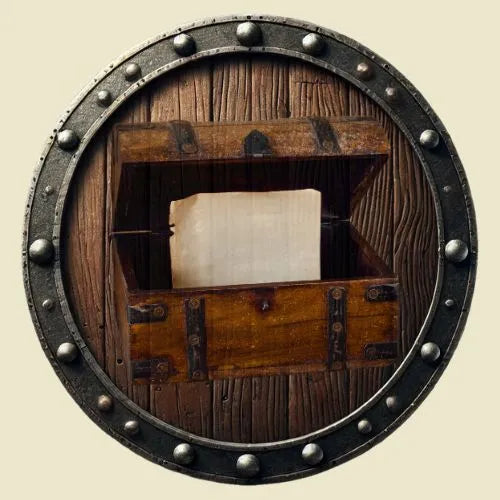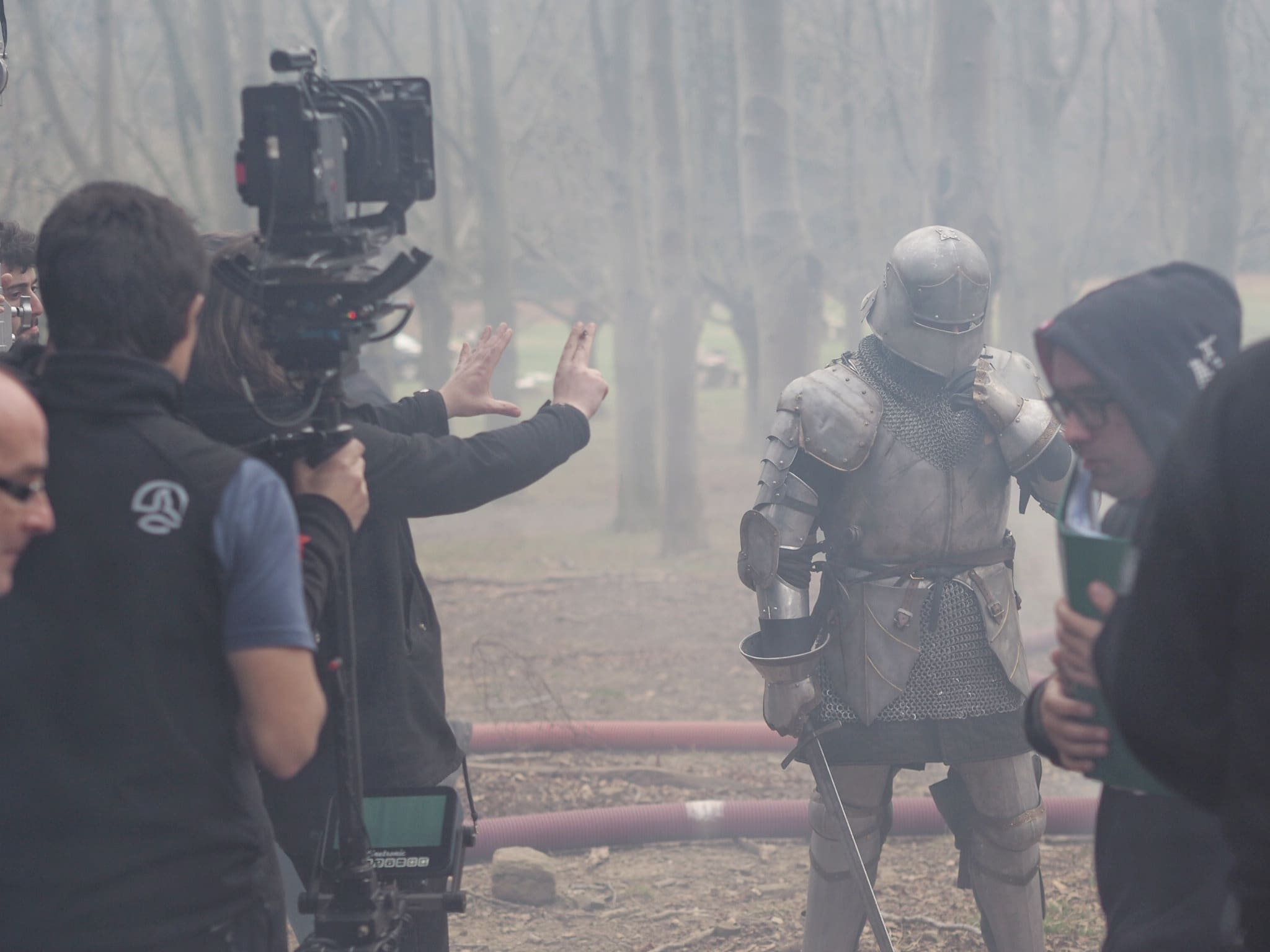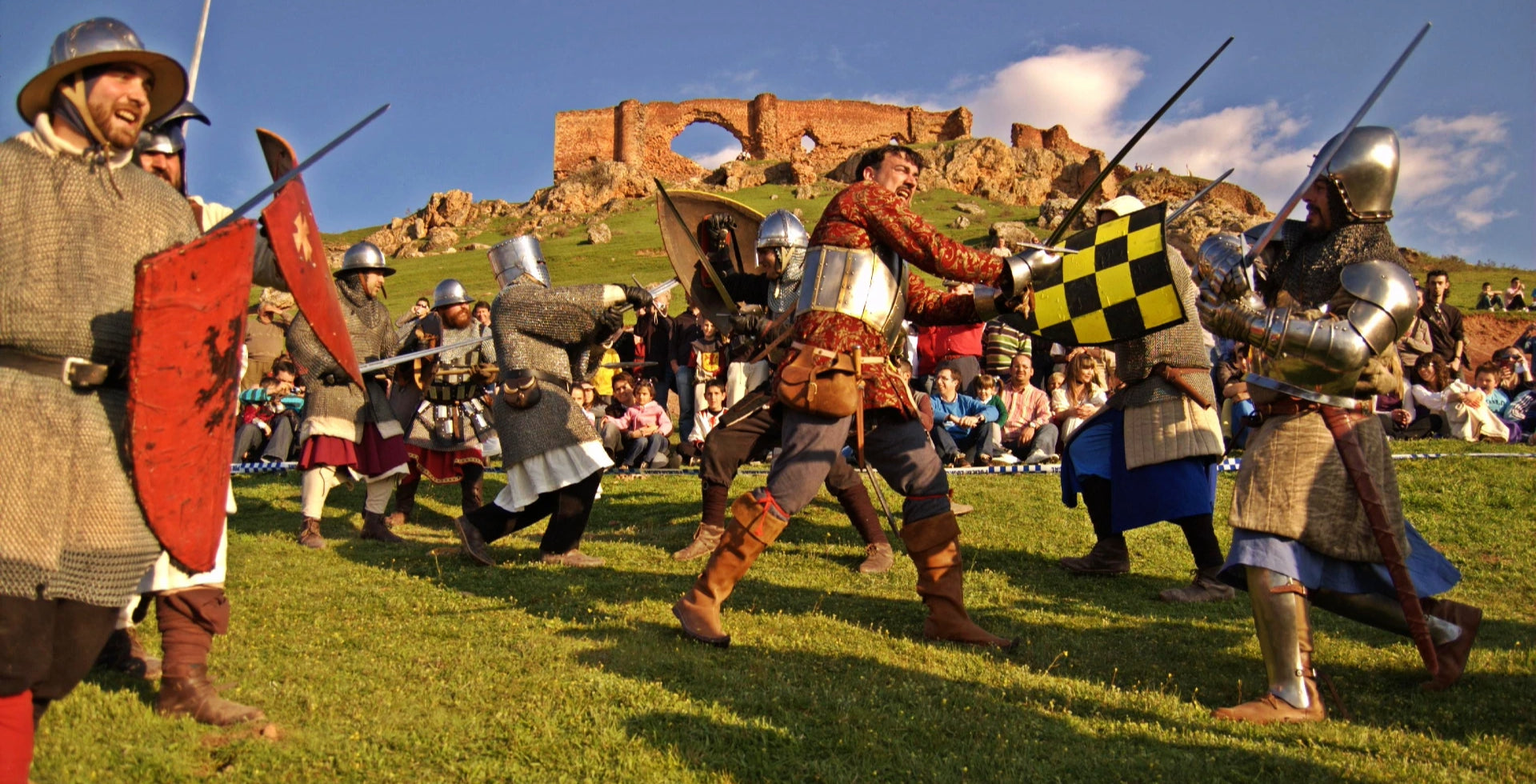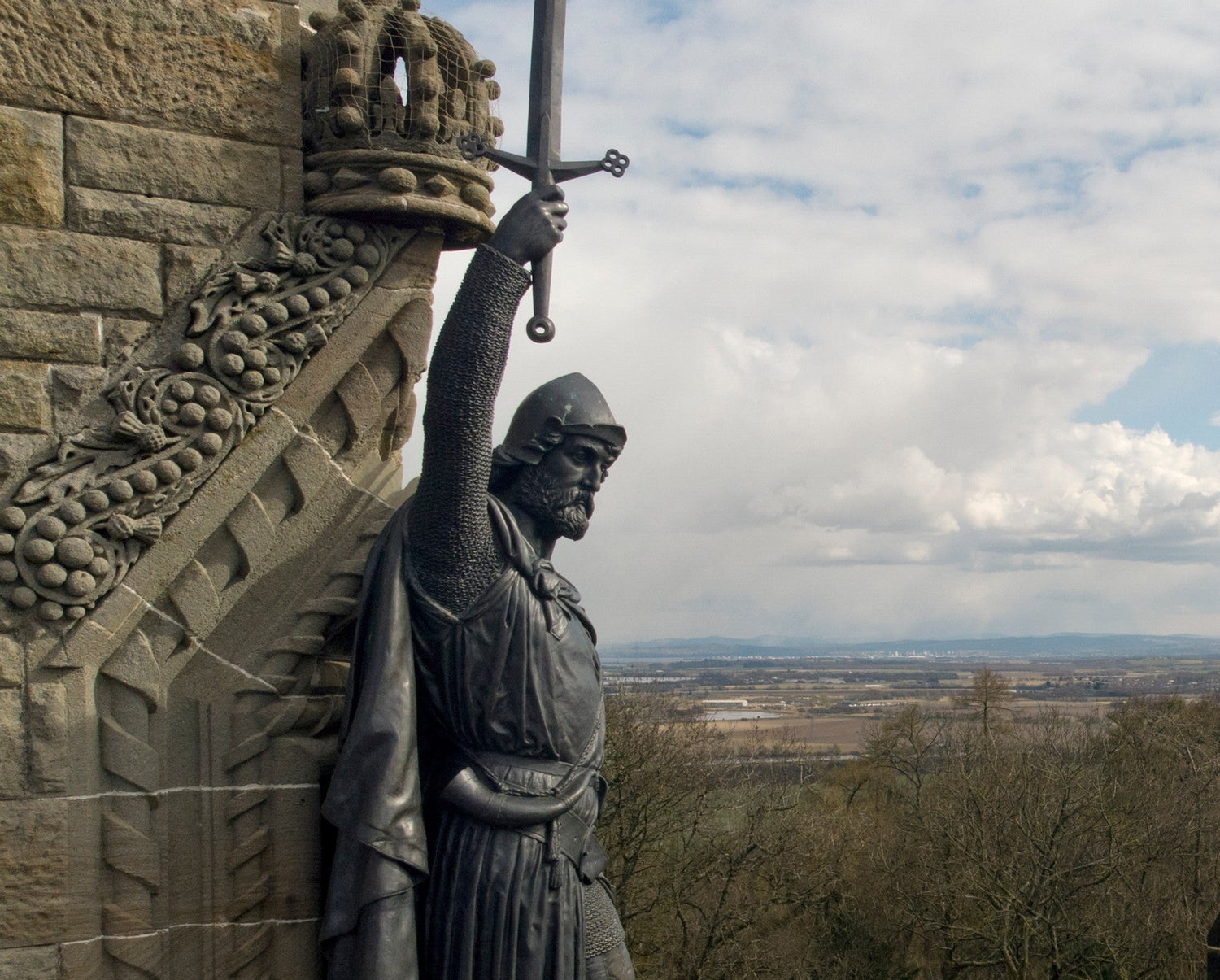William Wallace is a Scottish historical figure, known for his role as a leader in his country's fight for independence.
We invite you to learn a little about the history of this Scottish leader who, as a legacy, left his sword, a symbol of the courage in the fight for justice, freedom, and the honor of an entire people. And above all, to delve deeper into this sword, which many say is lost, but we will tell you its whereabouts: the site the Scots chose for the public to admire.
Who is William Wallace?

William Wallace is one of Scotland's most recognized national heroes.
Born around 1270, probably in Elderslie, near Paisley, Wallace lived in a time of great political turmoil following the death of Queen Margaret of Scotland in 1290.
The absence of a clear heir to the throne led to a crisis that, in 1296, King Edward I of England took advantage of to invade Scotland. The deposition of King John de Balliol and the English occupation provoked deep resentment among the Scots. It was in this context that William Wallace emerged as a key figure in the fight for independence.
Following the execution of his friend, the nobleman Sir William de Douglas, in 1297 Wallace led a rebellion that culminated in the Scottish victory at the Battle of Stirling Bridge.
His leadership led to his appointment as guardian of the realm on behalf of the imprisoned John de Balliol. However, his enemies grew both at home and abroad. As a result, he was captured in 1305 and his execution was particularly cruel. Despite this, his figure became an eternal symbol of freedom for Scotland.
The Sword of William Wallace: His Legacy
An eternal symbol of Scottish freedom and resilience

One of the most emblematic elements of his legacy is his sword, this impressive combat weapon that has survived to this day as a tangible testament to his struggle.
Manufactured in the late 13th century, this is a two-handed two-handed sword, probably forged by a Scottish craftsman. Measuring 1.67 meters in length and weighing over 2.5 kg, this sword required not only great dexterity but also considerable strength to wield effectively on the battlefield.
The hand-forged steel blade possesses the strength and flexibility characteristic of high-quality medieval weapons. Its simple design, devoid of decorative embellishments, reflects the pure functionality required by a warrior like Wallace, who was more interested in efficiency than adornment.
The elongated, leather-covered handle allowed it to be held with both hands, significantly increasing its striking power.
Where is William Wallace's Sword?
The whereabouts of a commemorative relic worthy of being contemplated

William Wallace's sword is currently housed at the National Wallace Monument in Stirling, Scotland.
It is displayed in a dedicated room, inside a climate-controlled display case with humidity and temperature control, ensuring its long-term preservation.
This monument, erected in 1869, attracts thousands of visitors each year, who come to see this historic piece up close and honor the memory of the Scottish leader.
The symbol of a free people
Wallace's sword is not just a weapon of war; it has become a symbol of resistance to oppression and the indomitable spirit of the Scottish people.
Through the centuries, it has been a silent witness to Scotland's transformation, from the Middle Ages to the present, and continues to inspire those who value freedom and justice.
The story of William Wallace and his sword transcends the boundaries of time and legend. Although his life ended brutally, his legacy lives on, and his sword remains one of Scotland's most powerful historical relics.
Beyond its military function, this sword is a testament to the courage, resilience, and passion for freedom of a man who became a legend. Visiting it in Stirling isn't just about looking at an ancient weapon; it's about contemplating the living history of an entire country.
Have you seen this William Walace sword (replica of an adaptation) in our store?
You can find this and many more at thelink .


